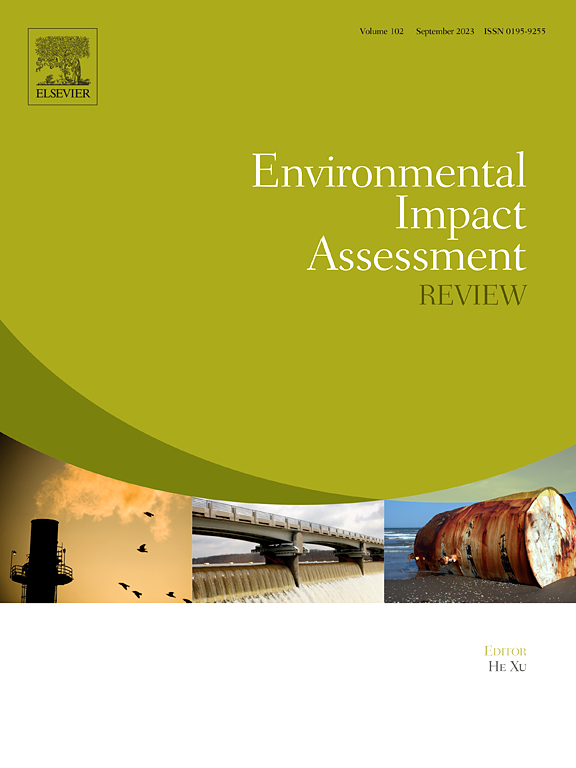为减少柴油排放而改造建筑设备的成本效益评估——生命周期和公共健康影响的视角
IF 9.8
1区 社会学
Q1 ENVIRONMENTAL STUDIES
引用次数: 0
摘要
改造施工设备被广泛认为是减少柴油排放的有效策略。然而,关于评估改造成本效益的综合模型的研究有限,而成本效益是制定成功改造计划的关键指标。本研究通过开发一种集成生命周期分析和公共卫生影响的新模型来解决这一差距。该模型由三个关键部分组成:计算与采用改造技术相关的生命周期平均年化成本(LCAAC),量化相应的公共卫生影响排放当量(PHEEE)的减少,以及分析成本效益。该模型的适用性通过对香港6428件建筑设备的案例研究来证明,这些设备分为71类进行分析。研究发现,每百万港元的翻新工程平均可减少4873.34公斤的phee。其中,额定功率在300至600马力之间的挖掘机。符合美国一级排放标准(标签为E-HP7-T1)的汽车被认为是最具成本效益的改装车型。值得注意的是,该研究强调了与改造相关的燃油罚款——在传统评估中经常被忽视——占总成本的53.86%,显著影响了成本效益结果。从生命周期和公共卫生影响的角度来看,该模型能够进行更准确的成本效益评估。它为政策制定者提供了工具,以优先考虑改造投资,最大限度地减少排放和健康效益。此外,它还为施工车队经理提供了有价值的见解,以提高改造效率,特别是通过减少燃油罚款的策略。本文章由计算机程序翻译,如有差异,请以英文原文为准。
Cost-effectiveness assessment of retrofitting construction equipment for reducing diesel emissions—A life cycle and public health effects perspective
Retrofitting construction equipment is widely recognized as an effective strategy to reduce diesel emissions. However, limited research exists on comprehensive models for assessing the cost-effectiveness of retrofitting—a critical metric in developing successful retrofitting programs. This study addresses this gap by developing a novel model that integrates life-cycle analysis and public health effects. The model consists of three key components: calculating the life-cycle average annualized cost (LCAAC) associated with employing retrofitting technologies, quantifying the corresponding reduction in public health effects emissions equivalent (PHEEE), and analyzing cost-effectiveness. The model's applicability is demonstrated through a case study on 6428 pieces of construction equipment in Hong Kong, grouped into 71 categories for analysis. The study finds that retrofitting achieves an average of 4873.34 kg PHEEE reduced per million HK$ spent. Among the categories, excavators with rated power between 300 and 600 hp. and compliant with US Tier 1 emission standards (labeled as E-HP7-T1) are identified as the most cost-effective to retrofit. Notably, the study highlights that fuel penalties associated with retrofitting—often overlooked in traditional assessment—constitute 53.86 % of total costs, significantly influencing cost-effectiveness outcomes. From a life-cycle and public health effects perspective, this model enables a more accurate cost-effectiveness assessment. It equips policymakers with tools to prioritize retrofitting investments that maximize emissions reductions and health benefits. Additionally, it offers valuable insights to construction fleet managers for improving retrofitting efficiency, particularly through strategies to mitigate fuel penalties.
求助全文
通过发布文献求助,成功后即可免费获取论文全文。
去求助
来源期刊

Environmental Impact Assessment Review
ENVIRONMENTAL STUDIES-
CiteScore
12.60
自引率
10.10%
发文量
200
审稿时长
33 days
期刊介绍:
Environmental Impact Assessment Review is an interdisciplinary journal that serves a global audience of practitioners, policymakers, and academics involved in assessing the environmental impact of policies, projects, processes, and products. The journal focuses on innovative theory and practice in environmental impact assessment (EIA). Papers are expected to present innovative ideas, be topical, and coherent. The journal emphasizes concepts, methods, techniques, approaches, and systems related to EIA theory and practice.
 求助内容:
求助内容: 应助结果提醒方式:
应助结果提醒方式:


